
Healthcare
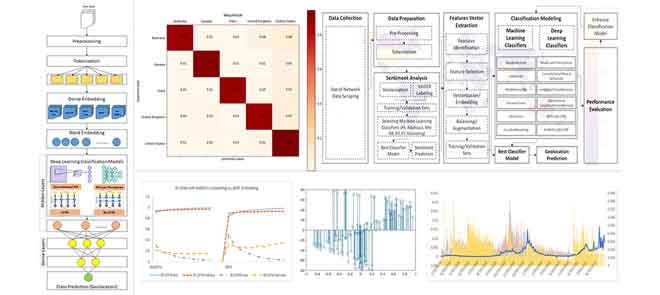
Sentiment-Based Spatiotemporal Prediction Framework for Pandemic Outbreaks Awareness Using Social Networks Data Classification
According to the World Health Organization, several factors have affected the accurate reporting of SARS-CoV-2 outbreak status, such as limited data collection resources, cultural and educational diversity, and inconsistent outbreak reporting from different sectors. Driven by this challenging situation, this study investigates the potential expediency of using social network data to develop reliable early information surveillance and warning system for pandemic outbreaks. As such, an enhanced framework of three inherently interlinked subsystems is proposed. The first subsystem includes data
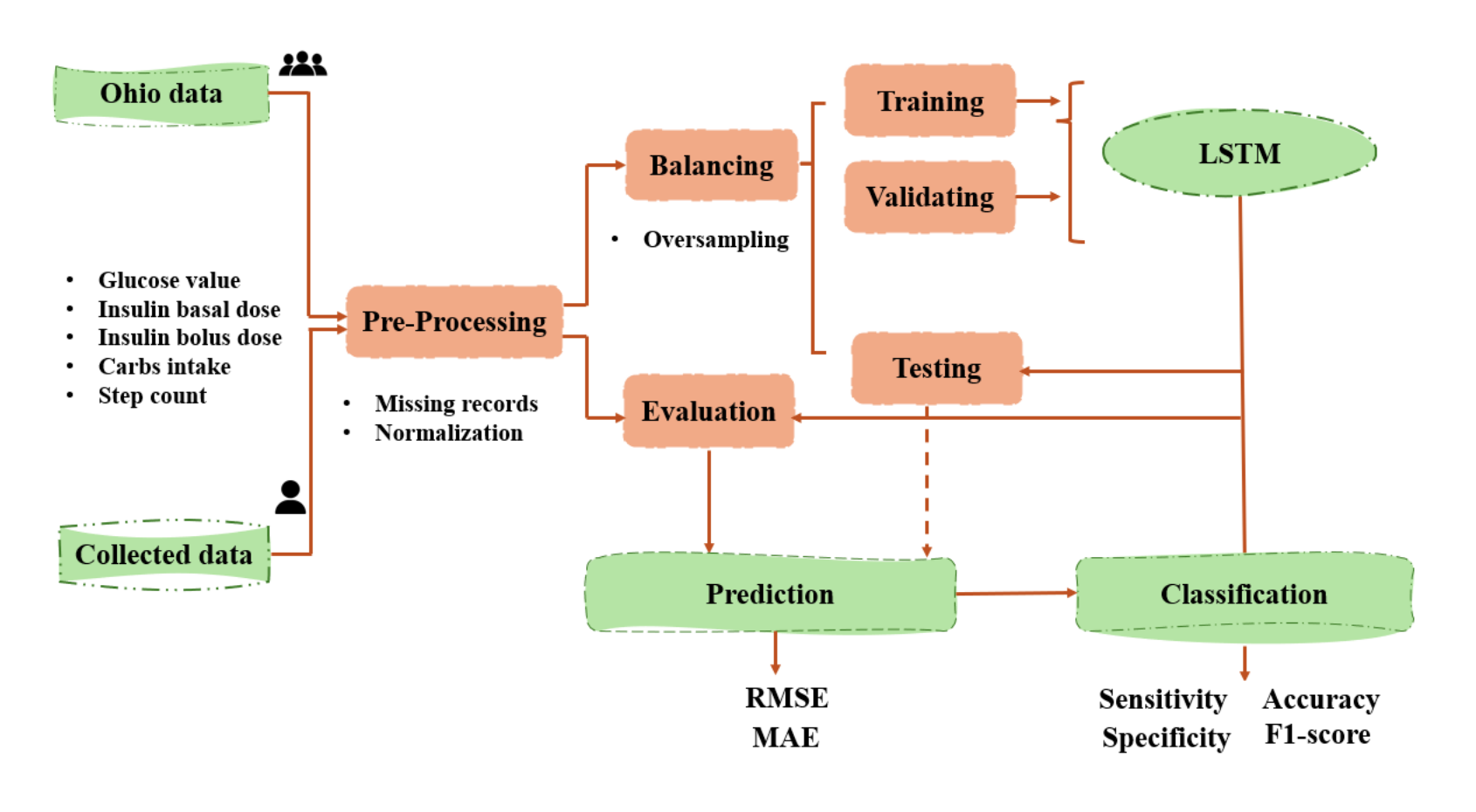
Intelligent Real-Time Hypoglycemia Prediction for Type 1 Diabetes
Hypoglycemia in Type 1 Diabetes (T1D) refers to a condition where blood glucose (BG) levels drop to abnormally low levels, typically below 70 mg/dL. This can occur when there is an excessive amount of insulin relative to the blood glucose level, leading to an imbalance that can be dangerous and potentially life-threatening if not promptly treated. The availability of large amounts of data from continuous glucose monitoring (CGM), insulin doses, carbohydrate intake, and additional vital signs, together with deep learning (DL) techniques, has revolutionized algorithmic approaches for BG
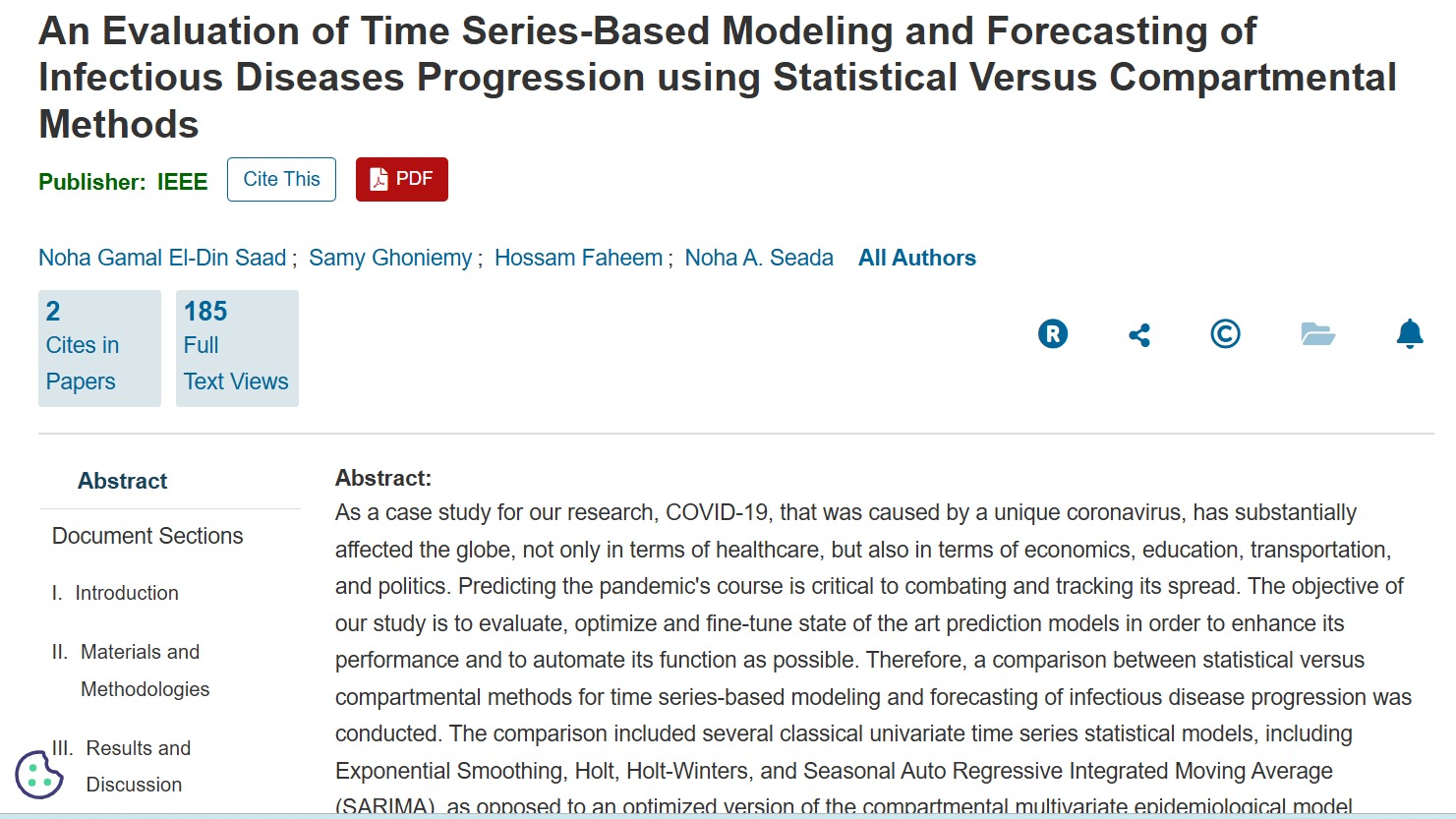
An Evaluation of Time Series-Based Modeling and Forecasting of Infectious Diseases Progression using Statistical Versus Compartmental Methods
As a case study for our research, COVID-19, that was caused by a unique coronavirus, has substantially affected the globe, not only in terms of healthcare, but also in terms of economics, education, transportation, and politics. Predicting the pandemic's course is critical to combating and tracking its spread. The objective of our study is to evaluate, optimize and fine-Tune state of the art prediction models in order to enhance its performance and to automate its function as possible. Therefore, a comparison between statistical versus compartmental methods for time series-based modeling and
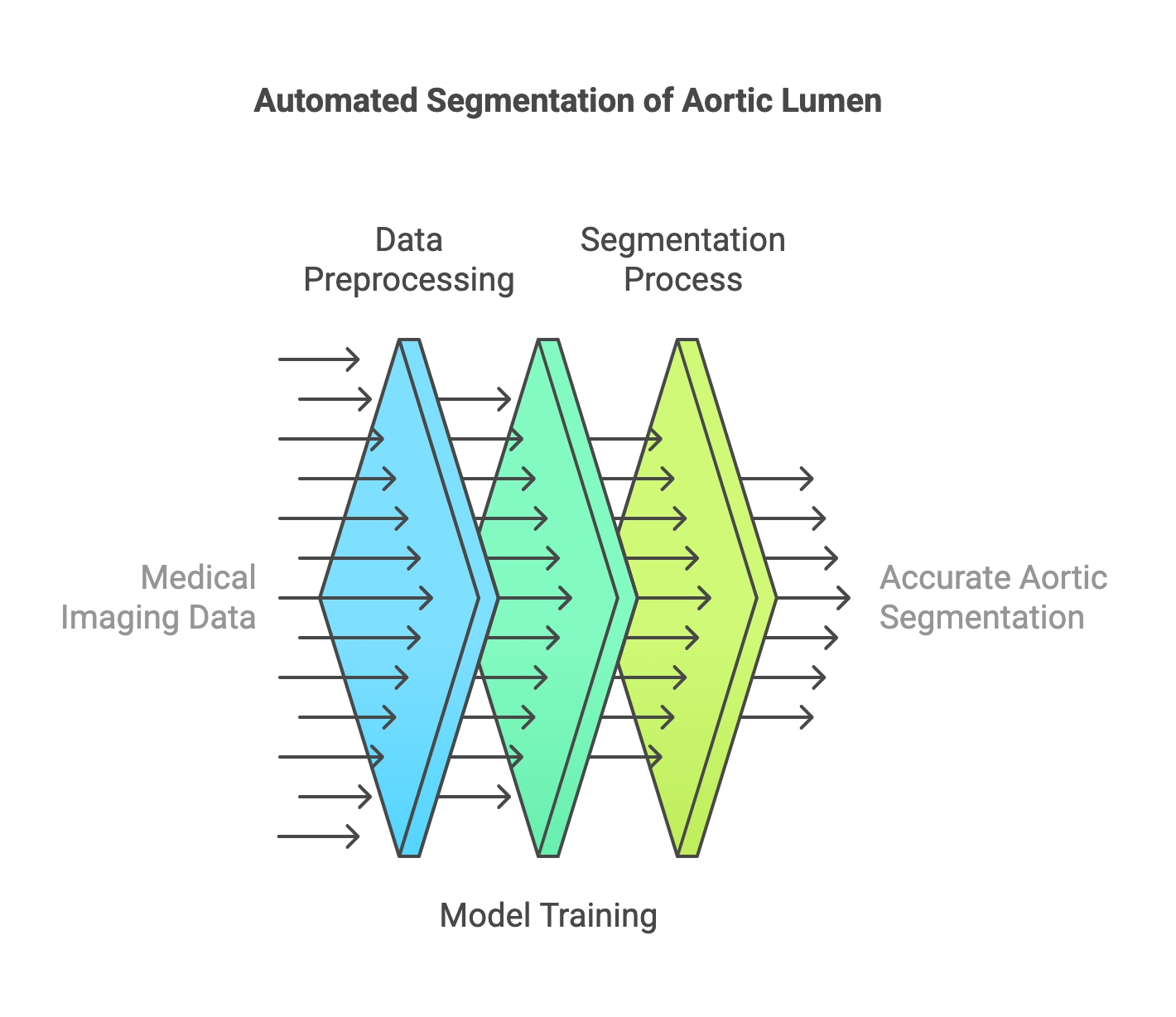
Automated Deep Learning Pipeline for Accurate Segmentation of Aortic Lumen and Branches in Abdominal Aortic Aneurysm: A Two-Step Approach
Abdominal Aortic Aneurysm (AAA) is a serious medical condition characterized by the abnormal enlargement of the abdominal aorta. If left untreated, AAA can have life-threatening consequences. Accurate segmentation of the aorta in Computed Tomography Angiography (CTA) images plays a vital role in treatment planning for AAA. However, manual and semi-automatic segmentation methods suffer from limitations in terms of time and accuracy. This study presents a deep learning pipeline that aims to fully automate the precise and efficient segmentation of the aorta and its branches within CTA images. A
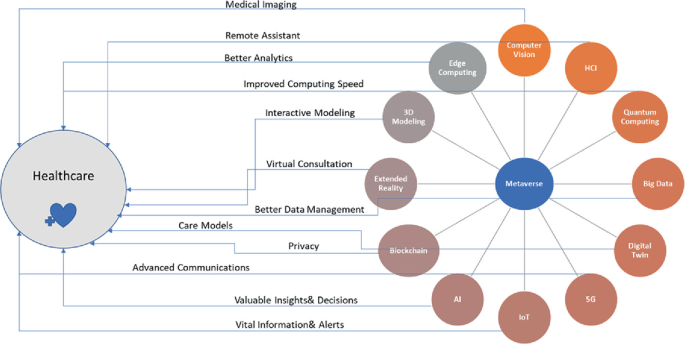
The Implication of Metaverse in the Traditional Medical Environment and Healthcare Sector: Applications and Challenges
There are a lot of studies that have been presenting the idea of the metaverse since 2021. It's the term for the next-generation mobile computing platform, which will be extensively utilized in the future and refers to the internet accessed through VR and AR glasses. The range of illnesses people face today is different from what it was decades ago. Cancer, COPD, diabetes, heart disease, and asthma are just few of the many non-communicable diseases that pose a serious risk to human health in the modern world. As a result, efforts toward chronic disease prevention and management need to be
Sand-Biosolids Mixture Characterization and Potential
Biosolid-sludge of sewage treatment plants was mixed with clean coarse sands to reduce soil permeability and assess the potential of utilizing such mix for several geotechnical applications. One of the applications was to develop a soil mix with low permeability for use in roadway embankments subjected to torrents from sudden heavy rain in desert areas. The main purpose was to address a sustainable and eco-friendly mix to be used as an additional protection to the current boulder lining for such embankments. In this study, biosolid sludge was mixed with medium dense sand using percentages
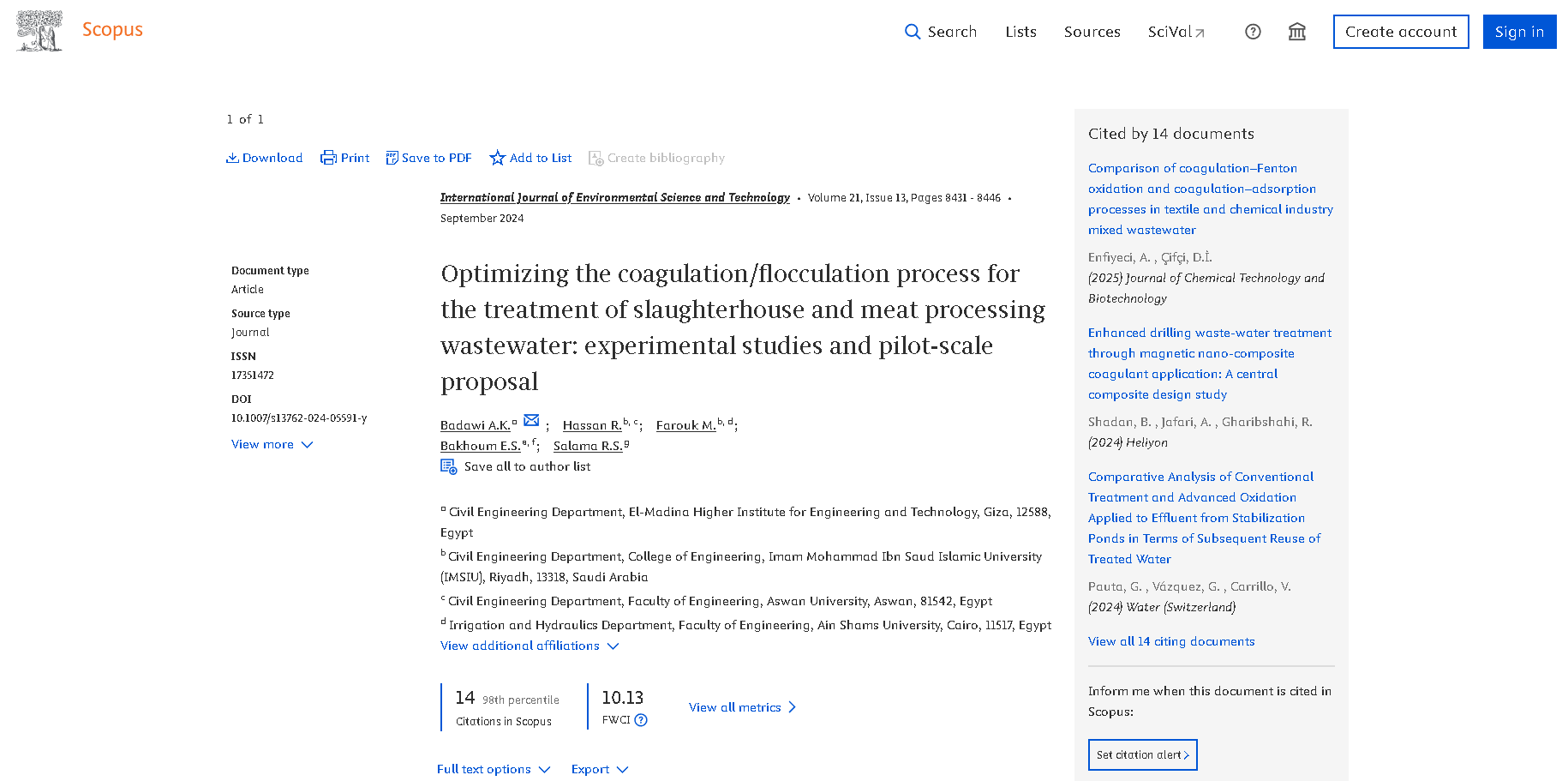
Optimizing the coagulation/flocculation process for the treatment of slaughterhouse and meat processing wastewater: experimental studies and pilot-scale proposal
The slaughterhouse industry generates substantial wastewater rich in proteins, lipids, fibers, and carbohydrates. This study integrates experimental investigations into artificial neural network (ANN) optimization and commerce design studies for treating slaughterhouse and meat processing wastewater (SMW). Batch coagulation/flocculation experiments identified optimal conditions for three coagulants: Ferric Chloride (FeCl3·6H2O), Poly Aluminum Chloride (PAC), and Aluminum Sulfate Al2(SO4)3, aiming for optimum removal of chemical oxygen demand (COD), total suspended solids (TSS), and total
The Psychological Impact of University Brand Equity Using Firm Generated EWOM on Students’ Satisfaction: The Moderating Effect of Gender
This study uses firm-generated "electronic word of mouth (eWOM)" and students' satisfaction to analyse the effect of university brand equity. Four aspects of brand equity—"awareness, positioning, perceived quality, and trustworthiness"—are examined by the conceptual framework. It also examines how gender influences the relationship between student satisfaction and institution brand equity. At Nile University in Cairo, Egypt, the study used an exploratory survey methodology with a sample of 295 students from its four schools of "business administration, computer science, engineering, and
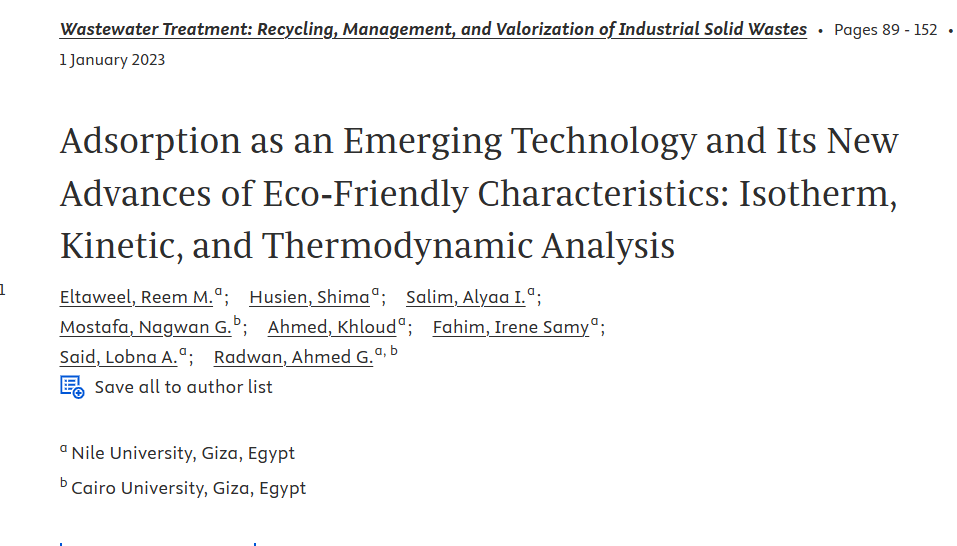
Adsorption as an Emerging Technology and Its New Advances of Eco-Friendly Characteristics: Isotherm, Kinetic, and Thermodynamic Analysis
Water contamination with paints causes a colour agent to the water that negatively affects the environment, organisms, and humans. Different physicochemical processes are applied for wastewater treatment; however, they have many drawbacks such as high cost, generating toxic waste, and non-effective at low concentrations. Adsorption is considered a promising technique for pollutant removal from polluted wastewater. Commercial activated carbon, nano-materials, and natural biological materials are used as adsorbents in adsorption. This chapter focuses on discussing the adsorption process, the
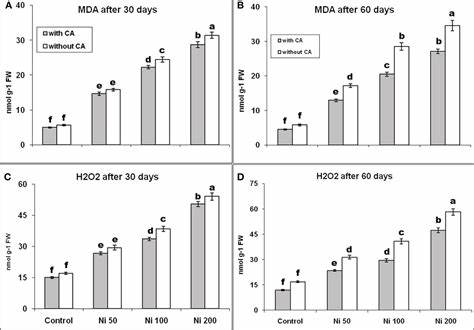
Water Importance and Pollution Sources-Recommended Limits of Pollutants
There are many water resources like rivers, seas, rains, and groundwater, which can be used in different sectors such as agricultural, domestic, and industrial uses. Therefore, different wastewater effluents with different properties are produced depending on their source. Industrial wastewater is one of the most harmful effluents due to the presence of toxic pollutants such as heavy metals, dyes, and other toxic substances. Usually, water is used in different industries for different internal processes, and then the resulting wastewater is discharged without treatment into the water resources